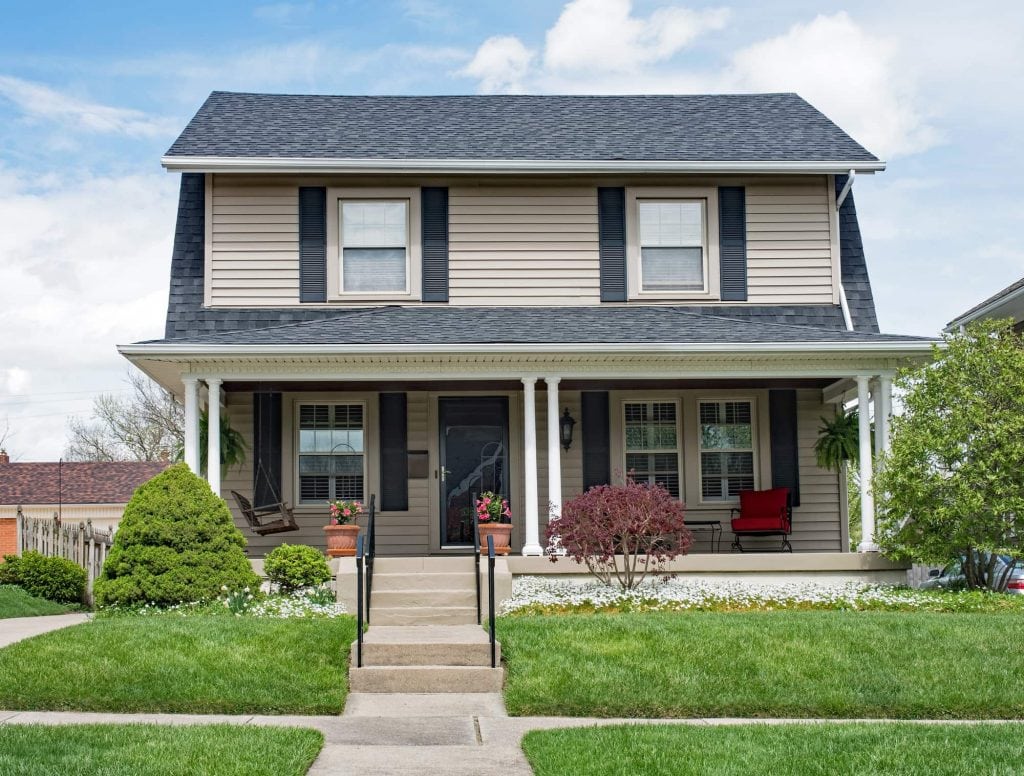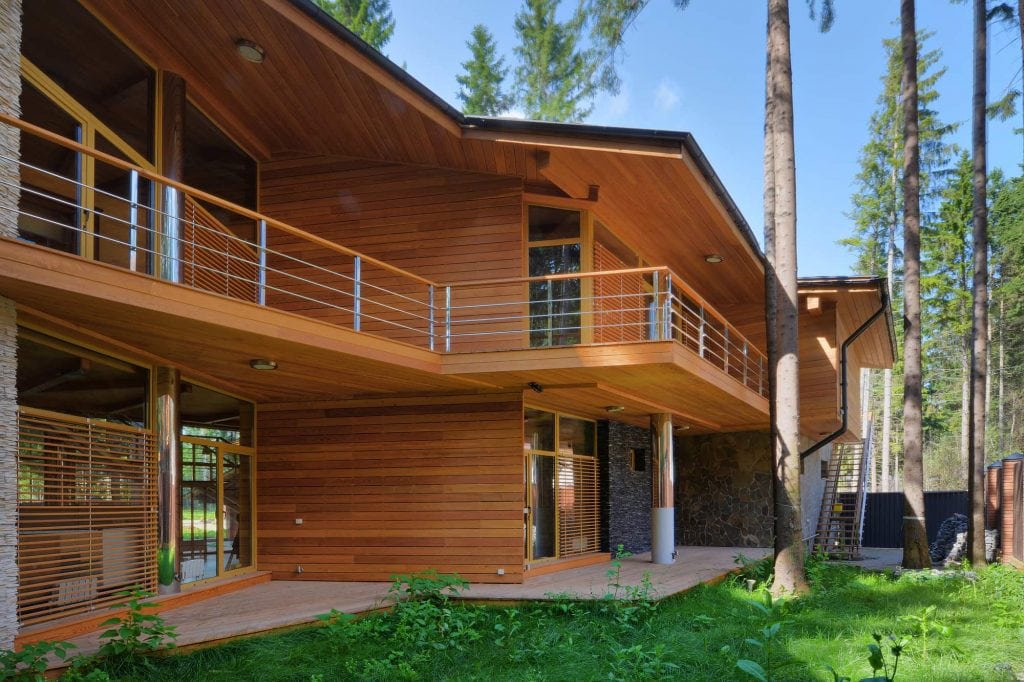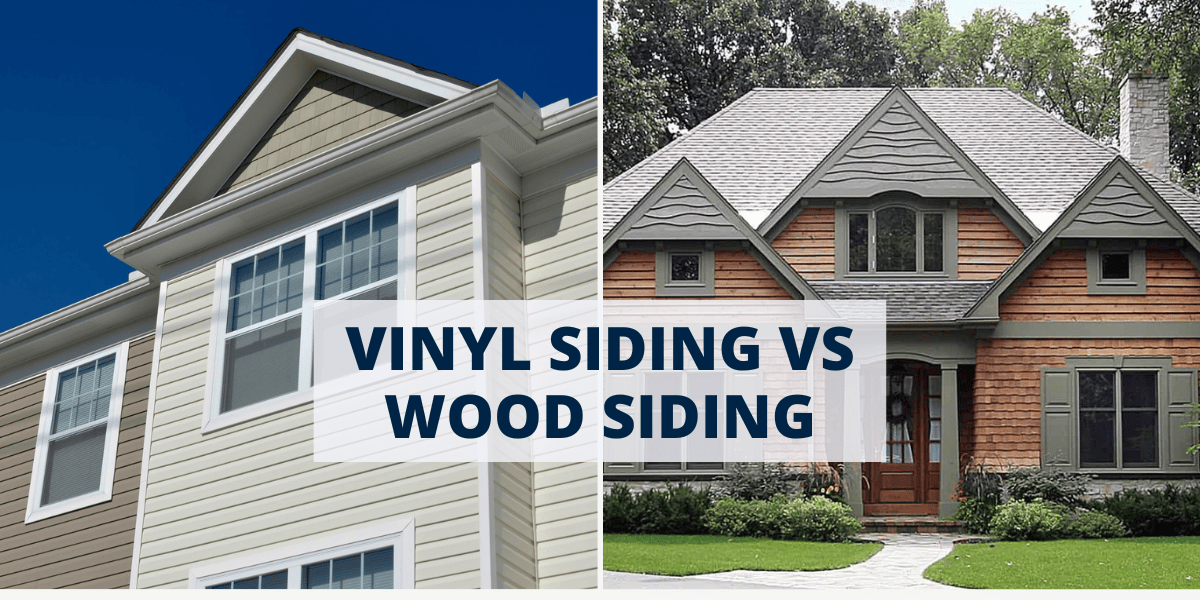Choosing the right siding for your home can significantly influence curb appeal, energy efficiency, and overall maintenance requirements. Both vinyl and wood siding are popular, but which is better?
In this guide, we will explore the advantages and disadvantages of both house siding options so you can make an informed decision if you’re looking to purchase a new home.
Vinyl Siding: Advantages and Disadvantages
Whether renovating or building, vinyl siding is a popular choice. Understanding the advantages and disadvantages of this type of siding can help you decide if it’s the right fit for you.

Advantages
Due to its low maintenance, traditional vinyl siding is a favorite among homeowners. It does not need regular painting and can be easily cleaned. Unlike wood, it doesn’t rot or warp and is insect-resistant.
Vinyl siding is highly durable. It can withstand harsh weather conditions, including extreme heat and cold. Some vinyl siding products even have impact resistance, providing extra peace of mind.
One of the main reasons why vinyl siding is a popular choice is its affordability. The average costs per square foot are lower than that of wood siding, making it an excellent choice for budget-conscious homeowners. Its low maintenance requirements can save you on long-term costs.
Vinyl siding comes in various colors and styles, allowing you to customize your home’s exterior. Whether you prefer traditional or vertical lap siding or want the look of cedar shakes, there’s a vinyl siding product for you.
Disadvantages
While vinyl siding offers many color options, some homeowners feel it needs more natural warmth and texture. Premium vinyl siding products have been designed to mimic natural wood’s appearance closely.
Vinyl siding can crack in extreme cold and warp in extreme heat. Choosing thicker grades or insulated siding can help mitigate this issue.
The manufacturing and disposal of vinyl siding can have a significant environmental impact. Some vinyl siding manufacturers are making strides in creating more eco-friendly options, such as insulated vinyl siding, which can reduce a home’s carbon footprint by improving energy efficiency.
When a vinyl siding panel gets damaged, you must replace the entire panel. Color fading and color batches can make matching the new piece challenging. High-performance vinyl siding offers superior fade resistance, ensuring that your siding maintains its color for years.
Wood Siding: Advantages and Disadvantages
Wood siding has unique pros and cons. Its natural beauty and warmth can charm any house, but it also comes with caveats.

Advantages
Wood siding is cherished for its natural beauty. It adds a warm, classic style to any home, which makes it an excellent choice for those seeking a traditional or rustic aesthetic. With various wood types available, homeowners can choose from various textures to create a unique look.
Wood is a more eco-friendly choice as a natural material than many other types of siding. It’s biodegradable and sourced from renewable resources.
Wood provides better thermal efficiency than other siding materials. Its natural insulating properties help keep your home warm in winter and cool in summer.
One of the benefits of wood siding is that it’s easier to repair than vinyl. If a board gets damaged, you can replace the individual board without affecting the entire façade, offering a cost-effective, straightforward solution.
Disadvantages
One significant drawback of wood siding is its high maintenance requirements. It needs regular painting, staining, and sealing to maintain. The effort can pay off with an impressive return on investment regarding property value.
Wood siding can be susceptible to moisture and pests. Regular inspection and prompt treatment of any issues can help preserve the wood and keep it in good shape.
Wood siding usually costs more per square foot than vinyl in terms of initial cost and long-term maintenance. Its natural beauty and potential to increase property value might offset the cost.
While the lifespan of wood siding depends on the type and its maintenance, it generally requires periodic replacement or renovation. On the other hand, adequately maintained wood siding can last for decades, providing a timeless appeal that few other materials can match.
Comparison: Vinyl Siding vs. Wood Siding
Making the final decision between vinyl siding and wood siding involves carefully considering many factors. Here, we delve deeper into a comprehensive comparison between the two materials.
Cost-Effectiveness and Long-Term Value
One of the first considerations when choosing a type of siding is the initial cost and the long-term value.
Vinyl siding is generally a more affordable option. The cost of vinyl siding per square foot is typically less than that of wood. Materials, labor, and installation costs make vinyl a more budget-friendly choice.
Regarding upkeep and repairs, vinyl siding also scores higher. It requires minimal maintenance and can easily be cleaned with a garden hose, saving homeowners the cost of regular painting or staining. However, should the vinyl siding get damaged, you may need to replace the entire panel.
From an investment standpoint, both types of siding can add significant value to your home. High-quality, well-maintained vinyl siding can increase the value of a home and offer a good return on investment.
On the other hand, wood siding, despite its higher initial cost and maintenance needs, can also provide an impressive return on investment thanks to its timeless appeal.
Durability and Resilience
The resilience and expected lifespan of your siding are crucial factors to consider.
Vinyl siding has excellent resistance to various environmental factors. It can withstand extreme temperatures, harsh weather conditions, and even direct flame. On the other hand, wood siding can be susceptible to moisture, rot, and insect damage.
Both materials have their unique vulnerabilities. Vinyl siding can crack in extreme cold and warp in extreme heat, while wood siding can rot and be damaged by insects.
These issues can be mitigated through proper care and high-quality materials, such as thicker grades or insulated products for vinyl siding and treated wood for wood siding.
Vinyl siding generally has a longer lifespan, often with 20 to 40 years warranties. Wood siding, however, can last for decades with proper maintenance, offering a timeless appeal that few other materials can match.
Aesthetics and Customization Options
The look and feel of your home exterior is another significant consideration when choosing a house siding.
Regarding visual appeal, wood siding offers a warm, natural aesthetic many homeowners adore. However, advancements in vinyl siding production now allow for products that closely mimic the appearance of natural wood.
Both materials offer various styles. Vinyl siding has multiple color options, from classic neutrals to bold, darker colors. Aside from the range of colors, it’s also available in different profiles, like traditional lap siding, vertical siding, and even styles that mimic cedar shakes. Wood siding offers natural textures and can be painted or stained in any color.
Environmental Impact
The environmental impact of your chosen siding material should also be a consideration when choosing among two different siding options.
In terms of sustainability, wood siding is considered more eco-friendly. On the contrary, manufacturing vinyl siding and disposal can have a significant environmental impact, although some manufacturers produce more eco-friendly options.
Wood can be recycled or naturally decomposed in the end-of-life cycle. Vinyl siding, however, is not biodegradable and can be challenging to recycle.
Both types of siding offer varying degrees of energy efficiency. Insulated vinyl siding can make your home energy efficient by reducing thermal bridging, while wood siding has natural insulating properties. In that sense, both can be insulated sidings and may maintain your energy bills stable.
Key Takeaways
Both vinyl and wood siding have advantages and disadvantages, and the choice between them depends on individual preferences, budget, and specific home needs.
Vinyl siding stands out for its affordability, low maintenance, and resilience against weather and pests. In contrast, wood siding offers a natural, timeless aesthetic, and potential value boost, albeit with more upkeep required.
Your decision should factor in the short-term costs and long-term implications. It’s always best to consult with a local eXp agent to help guide you through this process.
Whether you prefer vinyl siding or wood siding, the perfect property is waiting for you at eXp. To be up-to-date with new properties coming to your local (or desired) market, make sure to sign up for daily updates or connect with a knowledgeable agent to get further assistance.
FAQs: Vinyl Siding vs. Wood Siding
Here are some frequently asked questions about vinyl siding versus wood siding.
How much siding do I need for a 1200-square-foot house?
It depends on the square footage of your home’s exterior walls rather than the total square footage. To get an estimate, measure each exterior wall’s height and width, then multiply.
Is vinyl the cheapest siding?
Vinyl is one of the most affordable siding options, but prices can vary depending on quality, brand, and style.
What is a common problem with vinyl siding?
Common issues with vinyl siding include cracking in cold temperatures, warping in extreme heat, and fading over time. Many of these issues can be mitigated by choosing high-quality vinyl siding products.
What is the most common mistake when installing vinyl siding?
One of the most common mistakes is not allowing for the expansion and contraction of vinyl siding with temperature changes. This can cause the siding to warp or buckle.
Does vinyl siding devalue a home?
While vinyl siding may not boost a home’s value as much as other types, it generally does not decrease significantly.
What is the life expectancy of vinyl siding on a house?
With proper care and maintenance, vinyl siding can last up to 60 years. Some manufacturers even offer warranties that last as long as the house itself.
Should you remove the old siding before installing the new one?
Removing old siding before installing new is recommended to prevent potential issues. However, vinyl siding can be installed over existing siding.
Can I install vinyl siding myself?
While a skilled DIYer can install vinyl siding, hiring professionals is best to ensure the job is done correctly and you take the most out of your money.
How long does it take to install vinyl siding?
The time a standard vinyl siding installation takes varies depending on the house’s size and any project challenges. A team of professionals can typically complete a vinyl siding project in a few days to a week.





